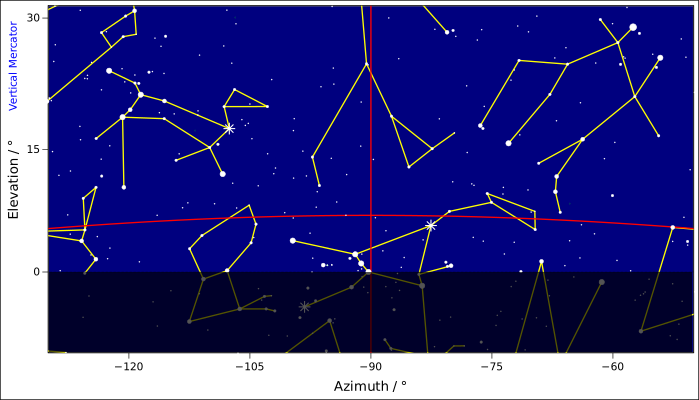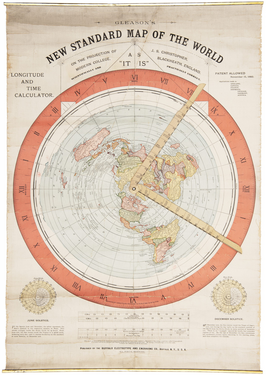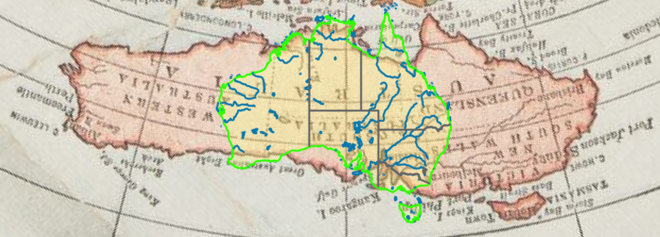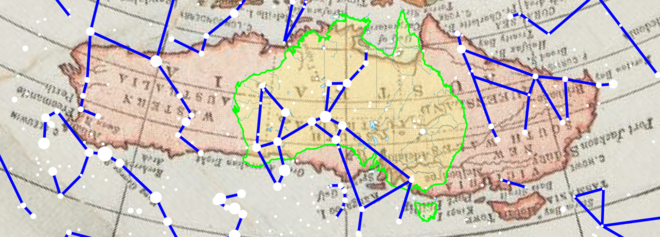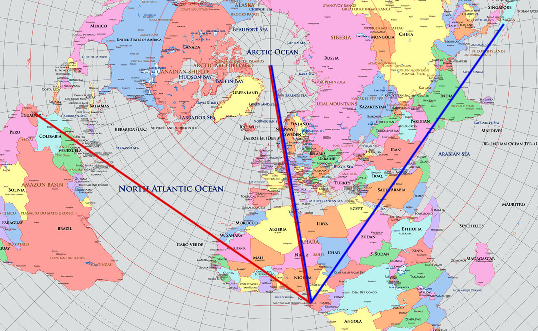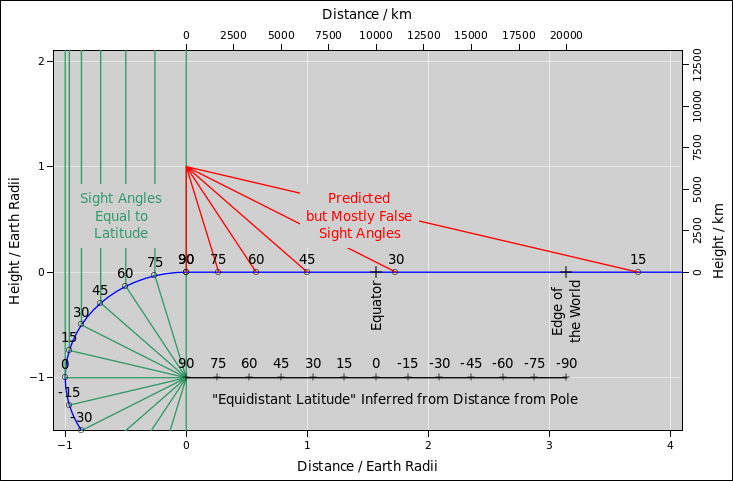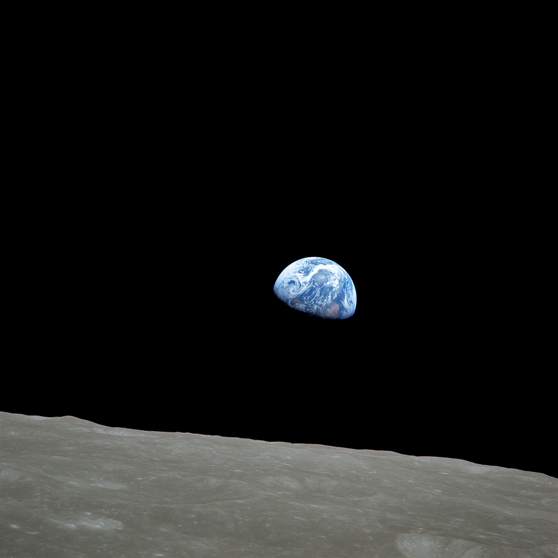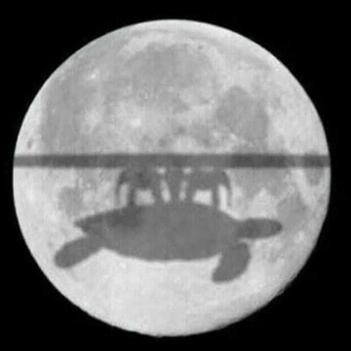In the real world, if Orion is straddling your horizon, then people a couple of time-zones east or west of you will find that Orion is completely above or completely below their horizon.
This is a big problem for any flat-earth model, since a star cannot possibly be above the horizontal plane for some observers and not others. That’s because the horizontal direction is the same for everybody. That’s what “flat” means.
All parts of that are nonsense. If you just look at the stars, you see that they do not normally get appreciably brighter or dimmer as they are rising or setting. If there is fog or haze on your horizon, wait for a clear day. In the narrowest sense there is “some” optical distortion in the atmosphere, but it’s far too small to be relevant to this discussion. You can easily check that the constellations maintain their size and shape at all times, whether they are near the horizon or not.
We routinely see lots of stars close to the horizon. Nothing bad happens to them. If you think stars don’t set below the horizon but instead disappear while they are still well above the horizon, take pictures. Nobody has ever taken pictures of such a disappearance, because that’s not what happens in the real world. Note that taking time-lapse pictures with a smartphone is fairly easy.
There are two approaches to thinking about this:
| Round World | Flat World |
| The sane approach is to consider it a projection of the real (round) earth onto a flat piece of paper. Any such projection will involve some nonidealities and some tradeoffs. This particular projection is called a polar azimuthal equidistant projection. | Gleason claims this is a flat map of a flat world, withi no tradeoffs. He says it represents the world “as it is”. A flat map of a flat world simply reduces the world distances by a uniform scale factor and plots them on the page. This hardly counts as a projection. It is the trivial projection, i.e. uniform rescaling. |
The scale factor is sometimes expressed in miles per inch, meaning that one inch on the map corresponds to so-and-so many miles in real life.
| The “equidistant” azimuthal projection, as applied to mapping the real world, is equidistant only for north/south distances. That is to say, the scale factor is the same everywhere on the map for north/south distances. In contrast, the east/west scale factor is a mess. Not only is it not conststent with the north/south scale factor; it’s not even consistent with itself. It changes from place to place on the map, drastically, depending on latitude. | Gleason and other flatniks pretend this map has a uniform scale factor. In other words, the scale factor is allegedly homogeneous (the same in all places) and isotropic (the same in all directions). |
| As such, the azimuthal projection is not wrong, but it is inconvenient, especially in southerly locations. It is not easy to interpret, and if misinterpreted it gives a distorted impression of things. | As such, the Gleason map describes a flat world that cannot possibly exist. It makes firm predictions that are wildly inconsistent with simple, familiar observations. |
Since we don’t know the actual miles-per-inch of this map, we will simply assume that the north/south scale factor is correct, and evaluate the east/west scale factors relative to that.
As it turns out, there are actual people living in Australia; 25 million of ’em. They have roads. They have cars. They have odometers and GPSs. They have maps that agree with the actual geometry of the place. They know that going E/W from Brisbane to Perth is only sbout 20% farther than going N/S from Bamaga to Melbourne ... not 3× farther, as Gleason would have you believe.
The size and shape of Australia was well known at the time when Gleason was preparing his map. The Royal Navy had sextants and chronometers, and knew how to use them.
It seems self-centered – literally – for a flatnik in Buffalo NY to choose a north polar projection, which works reasonably well at high northern latitudes, but is wildly inappropriate farther south. And then he grossly misinterpreted it.
As a general rule: Never confuse a symbol with the thing symbolized. For example: (1) If the light-switch is in the “on” position, it doesn’t necessarily mean the light is on; it could fail in any number of ways. (2) If the map is flat, it doesn’t mean the world is flat.
This distortion is a consequence of failing to account for the inconsistency between the north/south scale factor and the east/west scale factor.
So you don’t even need a car or a map. All you need is a phone. Contact a friend 2000 or 3000 km away and ask which stars are overhead. If the stars are where they should be, you know the Gleason map is a crock.
Note: At first glance, the constellations in the diagram appear backwards relative to their familiar normal appearance. That’s because we are looking down on them from behind. This is a faithful plot of what’s overhead where at 7:00 sidereal time.
There are actual people who live at the south pole, about 50 of them year-round, plus a hundred more during the sunny months.
The flatniks argue that since you can’t get to the south pole, it doesn’t matter whether it even exists. To that I reply that first of all, you actually can get to the south pole. It’s not easy, but I personally know two people who have been there. Furthermore, it does matter, because even if you can’t see the south geographic pole with your own eyes, anybody in the southern hemisphere can see the south celestial pole, which lets us infer where the geographic pole must be.
It must be directly south of Chile, directly south of Australia, and directly south of Africa, as millions of people can verify by going outside and looking at the stars. However, alas, no such point exists on the Gleason map. The three requirements are grossly incompatible.
To see what I mean, Go to figure 2 and try to put your finger on a point that is south of Chile, south of Australia, and south of Africa. It can’t be done.
The key point here is that applying an azimuthal equidistant projection to the earth requires the same projection to be applied to the stars, if there is to be any hope of a consistent model of what’s overhead when we look at the stars. Even then, that hope is in vain. If the Gleason-like star map makes sense north of the equator, it cannot possibly make sense south of the equator. It is not consistent with the behavior seen in the video in figure 5. It is even more obviously ridiculous than the terrestrial map, because we have a better view of it.
Six hours later, at midnight, Orion is high overhead your location.
Six hours after that, at 6am local time, Orion is setting in the west. Azimtuth 270 and elevation 0. At this time Orion is high overhead Quito, Ecuador, 9800 km west of you, due west along the equator, as shown in red in figure 6.
We now switch to the bogus world described by the Gleason map. As shown in blue in figure 7, the angle from the pole via Libreville to Padang is a 45∘ angle. So this map alleges that Orion rises in the northeast, azimuth 045. Similarly, it alleges that Orion sets in the northwest, azimuth 315. These angles are wildly wrong, wildly inconsistent with what is observed in the real world.
These problems are not caused by any trivial or superficial errors in the map. The symmetry of the situation and the timing – 12 hours from rise to set – make it very hard for any flat-earth model to get the right answer.
All the sight angles point to something very very far away, as they should.
The rest of the diagram shows what the sight angles would be in the imaginary world described by the Gleason map. The only way we can even hope to make sense of the angles is to assume that they point to something rather nearby, only about 6370 km above the geographic north pole. (Not coincidentally that is the radius of the earth, Re. The distance from the pole to the equator, traveling along the surface of the earth, is π/2 Re, i.e. 10,000 km.)
This works reasonably well if you stay very near the pole. At latitude 75∘ north, the sight line is approximately 75∘ above the horizon, as it should be. However, things soon go to pot. Outside the immediate vicinity of the north pole, equally spaced angles do not correspond to equally spaced distances along the surface of the alleged flat earth. By the time we get to the equator, the pole is still more than 30∘ above the horizon, even though it should be all the way down on the horizon. Everywhere south of the equator the flat earth model predicts the north celestial pole is above the horizon, which is crazy. Even when we are at the outer edge of the disk, about to fall off the edge of the world, the north pole is still more than 15∘ above the horizon.
The Gleason map is based on a so-called “equidistant” projection, which means its lines of latitude are equally spaced in terms of north/south distance along the ground. The problem is, this notion of latitude cannot be reconciled with the sight angles. Any flat-earth model will have the same type of problem. If the sight angles are right at one point they will be wrong almost everywhere else. If the world were flat, the errors would be super-easy to notice. There would be innumerable huge glitches in the matrix.
At the simplest qualitative level: In the real world, anyone south of the equator will find that the north celestial pole is not visible, because it is below the northern horizon. The flat-earth model cannot accomodate this fact, because everyone north of the equator says the pole is above the horizon ... and in a flat world, it can’t be above the horizontal plane and below the horizontal plane at the same time.
We now tell a similar story without reference to any map, without reference to the pole, and without reference to lines of latitude. Just pick a star that is high overhead your location. Then phone a friend who is 5000 km away in any direction ... or multiple friends who are 5000 km away in multiple directions. In the real world your star will be 45∘ above the horizon for them. Similarly, anybody who is 10,000 km from your location will find your star low on their horizon.
In contrast, in any flat-earth model, your star would have to be above the horizon, i.e. above the horizontal plane, for everybody. That’s because the horizontal direction is the same for everybody. As previously mentioned, that’s what “flat” means.
Figure 8 can be re-used to describe this situation. You don’t need a map; all you need is a phone and an understanding of what “distance” means.
A flat-earth model cannot possibly explain why the direction reverses when you cross the equator.
